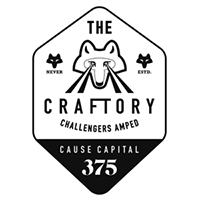Beware... the Ring of Fire
How not to build your challenger business
The tell-tale signs of a digital challenger brand in trouble are usually unmistakable: sales growth is triple-digit-stellar, margins are high, ROIs are dizzyingly positive – and more often than not the business can boast of delivering all this while remaining just about profitable, too. Conventionally this might be judged a spectacular report card, prompting investors to queue around the block. However peer one level deeper, and chances are the Lookalike Devil may have been doing his ugly worst.
The sulfuric whiff of Belzebub’s presence in the growth machine is typically sniffed in three stages: first it becomes apparent that a lot of the brand’s growth stems from launching into new markets abroad, despite penetration at home remaining sub-single-percent thin. Second comes the promise of a set of exciting new product innovations and line flankers certain to bolster the core product, despite 99% of consumers yet to try it. Third comes the reassurance that the recent uptick in the cost of acquiring new customers digitally (the so-called CPAs) is a temporary, minor glitch that’ll soon be rectified with a little focus. It won’t. If the Lookalike Devil’s playbook has been followed, CPAs will continue to rise. Acquiring new customers will turn unprofitable. New markets will be exhausted, product launches will disappoint. The business will go ex-growth – and the ring of fire will have burned itself out.
Blame Facebook.
Building a consumer brand used to be fiendishly tricky, and hellishly expensive. The process of winning over consumers required elaborate creative to be commissioned, complex media to be bought, and vast dollar amounts to be spent to take the distracted many down a funnel of awareness, consideration, trial, loyalty – and ending up with the advocate few. The miracle of Facebook means that virtually all of the above can be ignored, with willing consumers targeted laser-like, and the awareness-to-advocacy funnel cut straight to purchase with direct-response pennies. Except that it doesn’t, and brands who rely on fuelling their growth through the short-term heroin of inexplicably cheap consumer acquisition face the long-term hell of rapid churn and negligible equity. The reason, paradoxically, is Facebook’s sniper-sharp targeting itself.
FB’s Ad Manager allows new brands to reach willing but fickle early adopters with astonishing ease, and the handy Lookalike Audience tool takes away the marketer’s requirement even to have to understand who their consumers are or what messages resonate. The black box simply finds more and more consumers who respond with similar bargain-CPA efficiency to the brand’s advertising message. Pour cents into a pithy direct-response ad, and Lookalike Audience will magically return pleasing sales dollars.
However time and again, we see that this strategy leads to a mistaken sense of success, and that it rapidly fades – prompting the founders to scramble for similar cheap growth in new markets and new products instead of doing the hard work of building genuine loyal consumers.
Brands can’t be built using direct response only. Transactional messages are good at final-step conversion, but they create no lasting equity. Facebook’s success in targeting is also its downfall, because by optimising for cheap CPAs, the engine delivers those most willing to try something new. By design, the first consumers delivered through Lookalike are always the most efficient to acquire. It’s the lowest of the low-hanging fruit, but as the harvest expands, acquiring the marginal additional consumer only ever becomes more and more expensive. This is compounded by the fact that the most willing early adopters frequently derive value precisely from trying new things at high frequency – which means that they might be the cheapest to acquire, but they will also often be the first to churn. We regularly see challenger brands nurse churn rates of 80% or more using this technique.
Powerful brands engage consumers on an emotional level beyond functional benefits. That requires complex messaging, and equity to be built up through clever storytelling. It’s a multi-faceted approach that necessitates clarity of thought and perseverance. It requires investment in lasting value, and often that means the initial CPA of successful challenger brands might be much higher than those of Lookalike growth junkies. However they are rewarded with much lower churn, and the network effect of genuine advocacy.
So if you’re the founder or CMO of a promising challenger brand, The Craftory’s advice is to walk away from the pact with the Devil. Do the hard work of building a genuine brand first, and only using Facebook’s direct response magic second. After all, hell is where the Big-Business incumbents are meant to end up.
Ernesto Schmitt is co-founder at The Craftory, the brand-new counter-corporate anti-VC on a $300M mission to back the world's boldest insurgent challenger brands in the consumer goods space.


